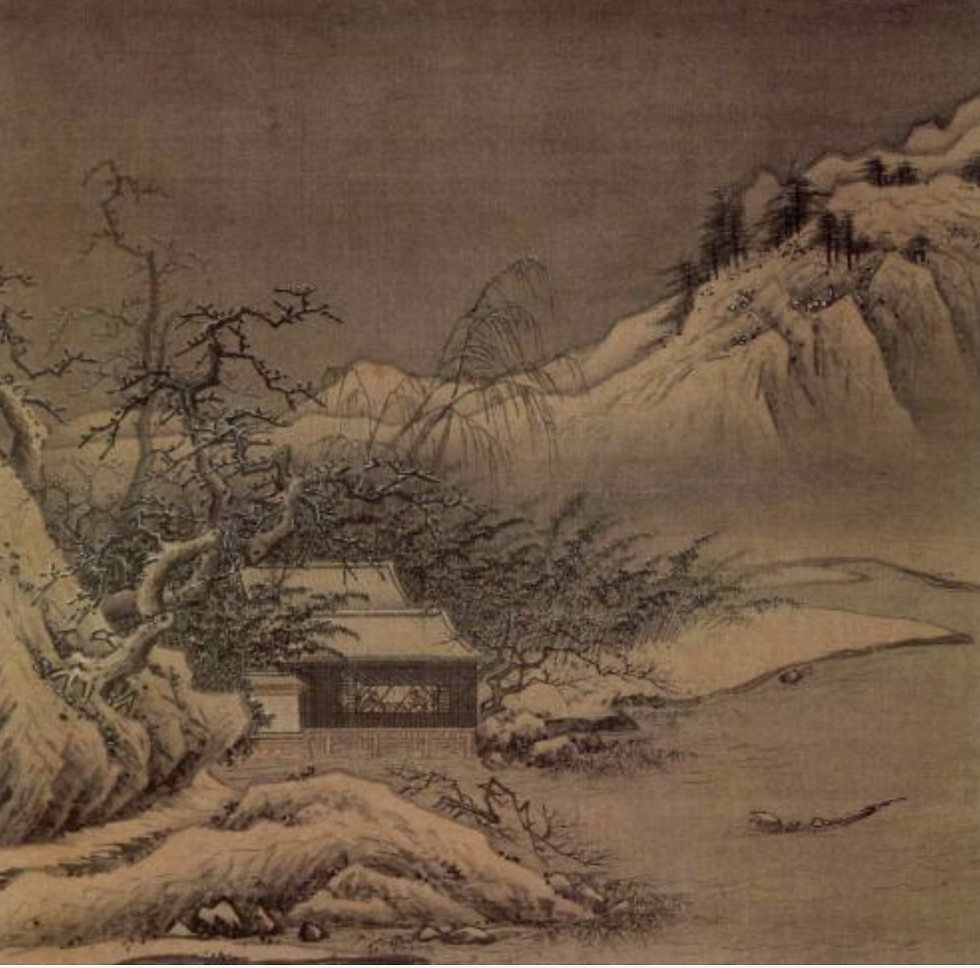汲江煎茶 Making New Season Tea by a Spring Stream
- Julia Min
- Jan 24, 2024
- 3 min read
Updated: Aug 21
汲江煎茶
原作: 苏轼(字子瞻, 号东坡居士; 11世纪北宋)
英译: 闵晓红(2024.01)
活水还须活火烹,
自临钓石取深清。
大瓢贮月归春瓮,
小杓分江入夜瓶。
雪乳已翻煎处脚,
松风忽作泻时声。
枯肠未易禁三碗,
坐听荒城长短更。
Making New Season Tea by a Spring Stream
Chinese original: Su Shi (11th AC, social name 'Dongpo')
English translation: Julia Min (Jan. 2024)
The finest tea is made over a fresh fire,
With water drawn from a flowing stream.
From the end of fishing rocks on the pier,
I try to source clear water from the deep.
The dipper stole the moon into my urn,
A stream share to the kettle the scoop feeds.
Soon it boils to a cream top of snowy foam.
Tea grounds roll up an aroma rich and sweet.
Then I pour a thin stream of spring to a bowl,-
A soothing sound like breeze through pineries.
The ‘three-bowl limit’ can’t be My cup of tea
To kill long nights in a town barren and bleak.

Notes:
1. new season tea: likely referring to Grain-Rain Tea in spring, a conventional preference of southern Chinese green tea lovers. Tea leaves picked before the Grain Rain (mid-April) tastes refreshing with a delicate fragrance, while the leaves after the season taste rich and sweet with a more sophisticated aroma, often used to make black tea. Su Shi could be making teas with the postseason Grain Rain tea.
2. a cream top of snowy foam: likely referring to matcha (tea grounds / powder) made from tencha in a small wooden or stone tool. Boiling tea leaves won’t produce a creamy top, but tea grounds do.
3. ‘three-bowl limit’: a famous comment by Lu Tong (卢仝), a poet of the Tang Dynasty – “the first bowl moistens the mouth. The second bowl drives away loneliness. The third bowl opens your creative mind. …”
Appreciation:
This tea poem was composed during spring in 1100 at Hainan Island, “the end of the world” as often called by ancient Chinese writers. The new season tea could be sourced from local friends or students. Although he was banished as far as his political opponent could find on the Song map, he was able to find peace in his mind with his surrounding world, wild and desolate as it could be. Tea culture has been woven into the tapestry of Chinese culture like silk that defines Chinese fine costumes. With only a few lines, Su Shi drew a motion picture of tea-making in the Song Dynasty, where we immediately sense a big difference from what we do today. Tell me what you have discovered here? Have you ever tried boiling tea instead of brewing it?
Tea was largely introduced to Britain during the colonial period, where it was highly appreciated by the upper class in the early decades before becoming affordable to the common people. I vividly recall my 1998 visit to a castle in Scotland, where I saw a crafted tea drawer that locked away tea to prevent servants from stealing it, as it was a privilege for the masters and their guests only. A similar understanding is shared in the modern era by William Gladstone (a former British Prime Minister, 1809-1898) in his poem “Brew a Cup a Tea” -- “When the world is all at oddsAnd the mind is all at sea,/Then cease the useless tedium/And brew a cup of tea./There is magic in its fragrance,/There is solace in its taste;/And the laden moments vanish/Somehow into space./And the world becomes a lovely thing!/There’s beauty as you’ll see;/All because you briefly stopped/To brew a cup of tea.”
Reference:
baikebaidu.com 百度百科
picture from 《澎湃新闻》澎湃号·湃客



Comments